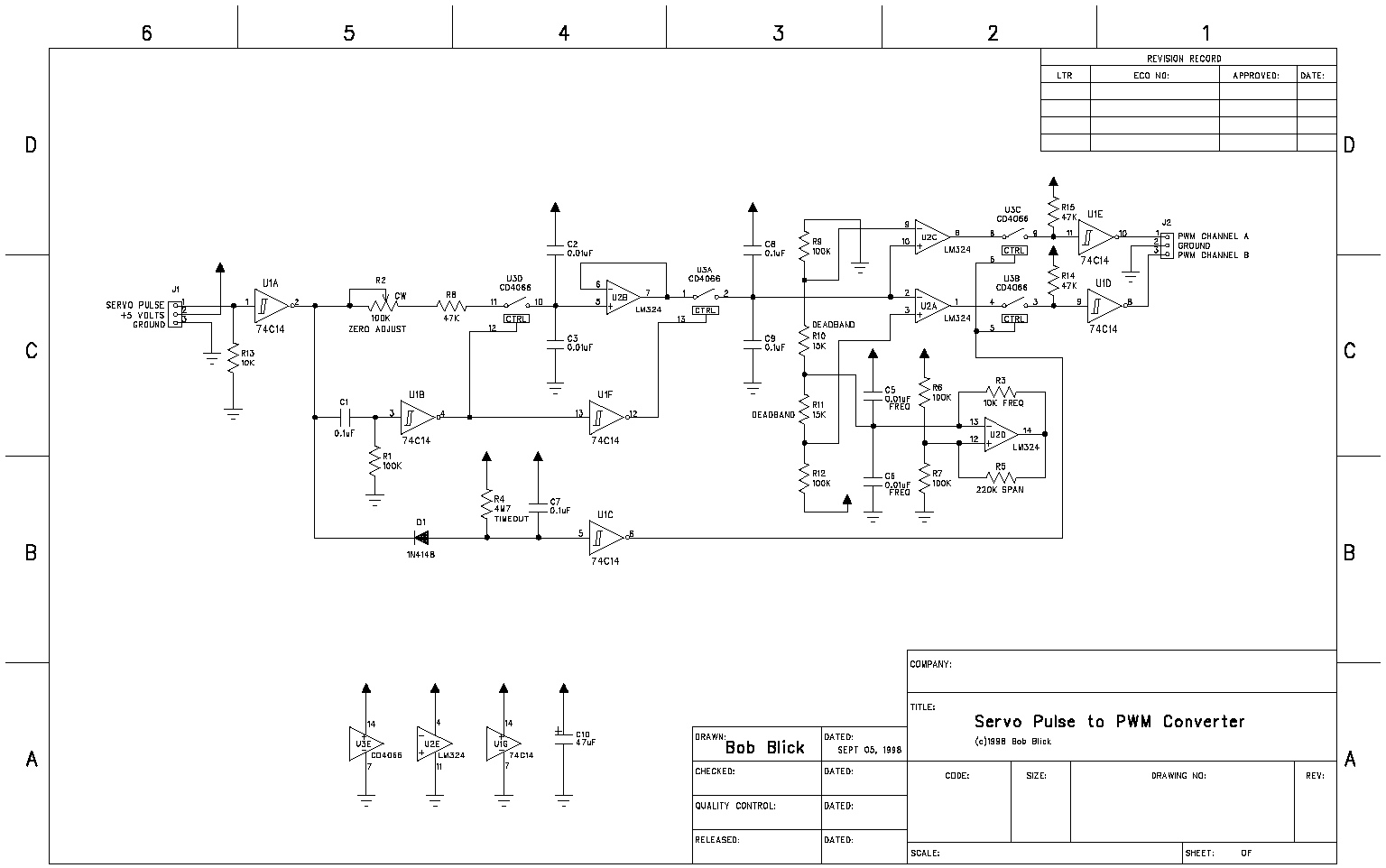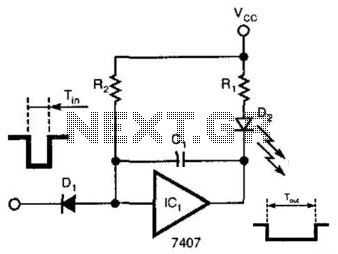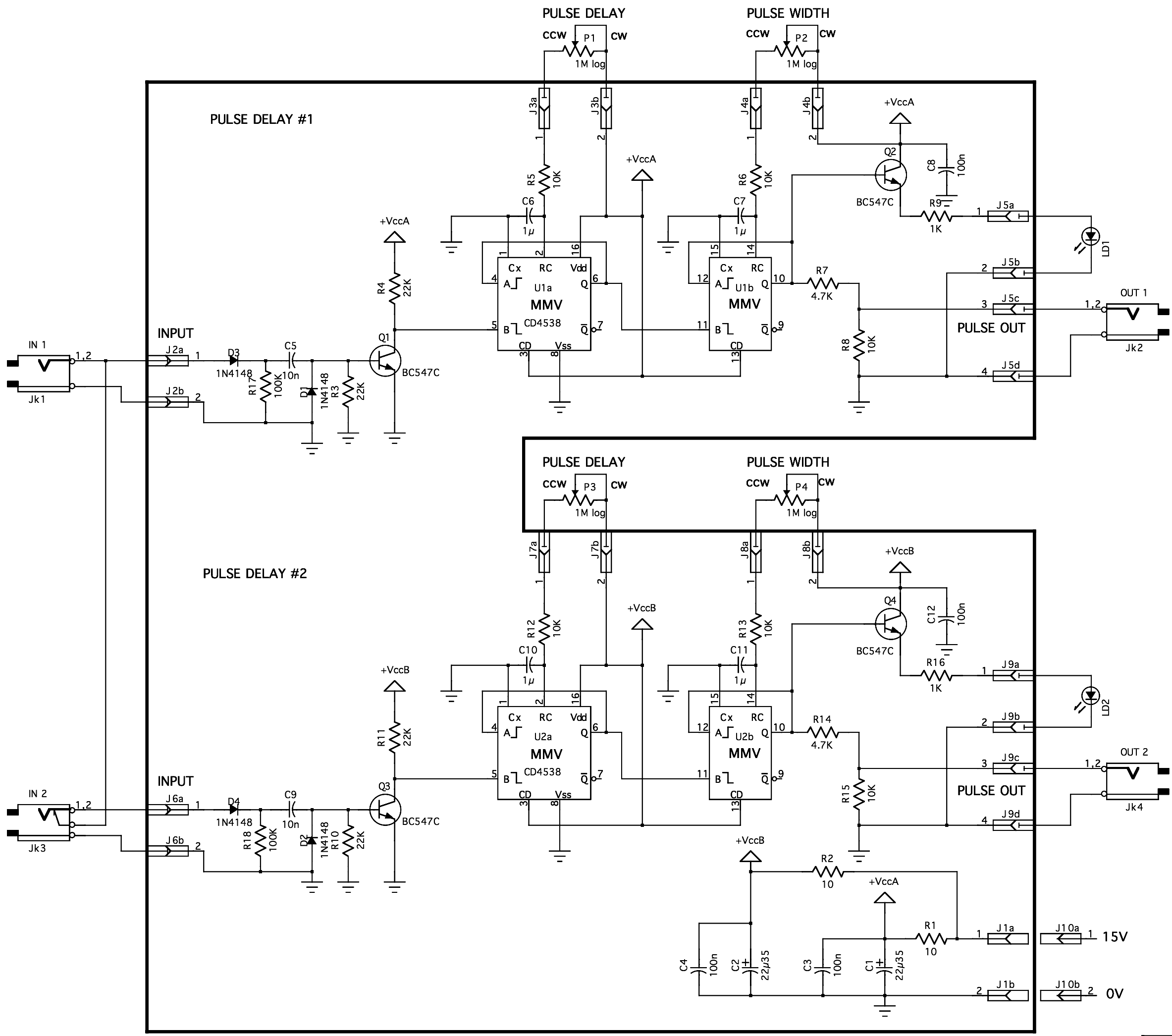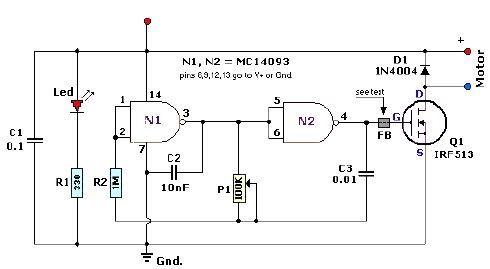
Servo pulse to PWM converter

The circuit presented on this page attempts to be an interface to convert pulses such as provided by a Basic Stamp or R/C receiver to a dual PWM (Pulse Width Modulation) signal required by an H-bridge. The simplest circuit would use a small microcontroller like a PIC. This circuit takes a more traditional approach. Many experimenters will have all the parts already. Total parts cost should be equal to a simple espresso drink, although I have stopped drinking coffee I still remember how much it costs.
The described circuit functions as a pulse converter, transforming incoming pulses from devices such as a Basic Stamp or an R/C receiver into a dual PWM signal. This dual PWM output is essential for controlling the operation of an H-bridge, which is commonly used to drive DC motors in robotics and automation applications.
The design utilizes discrete components rather than a microcontroller, making it accessible for hobbyists and experimenters who may have these components readily available. The circuit typically includes resistors, capacitors, and possibly transistors or operational amplifiers to shape and modify the input signal into the desired PWM output.
In operation, the circuit receives the pulse signal from the Basic Stamp or R/C receiver. It processes these pulses by adjusting their width and frequency to create two separate PWM signals, which are then fed into the H-bridge. The H-bridge interprets these signals to control the direction and speed of the motor.
The choice of a traditional component-based approach over a microcontroller may also provide advantages in terms of simplicity and reliability, particularly in environments where programming may be less desirable or feasible. The total cost of the components is relatively low, comparable to that of a simple beverage, making it an economical solution for those looking to experiment with motor control without significant investment.
Overall, this circuit serves as a practical example of how traditional electronic components can be effectively utilized to achieve modern control applications.The circuit presented on this page attemps to be an interface to convert pulses such as provided by a Basic Stamp or R/C receiver to a dual PWM(Pulse Width Modulation) signal required by an H-bridge. The simplest circuit would use a small microcontroller like a PIC. This circuit takes a more traditional approach. Many experimenters will have all the parts already. Total parts cost should be equal to a simple espresso drink, although I have stopped drinking coffee I still remember how much it costs :-)
🔗 External reference
The described circuit functions as a pulse converter, transforming incoming pulses from devices such as a Basic Stamp or an R/C receiver into a dual PWM signal. This dual PWM output is essential for controlling the operation of an H-bridge, which is commonly used to drive DC motors in robotics and automation applications.
The design utilizes discrete components rather than a microcontroller, making it accessible for hobbyists and experimenters who may have these components readily available. The circuit typically includes resistors, capacitors, and possibly transistors or operational amplifiers to shape and modify the input signal into the desired PWM output.
In operation, the circuit receives the pulse signal from the Basic Stamp or R/C receiver. It processes these pulses by adjusting their width and frequency to create two separate PWM signals, which are then fed into the H-bridge. The H-bridge interprets these signals to control the direction and speed of the motor.
The choice of a traditional component-based approach over a microcontroller may also provide advantages in terms of simplicity and reliability, particularly in environments where programming may be less desirable or feasible. The total cost of the components is relatively low, comparable to that of a simple beverage, making it an economical solution for those looking to experiment with motor control without significant investment.
Overall, this circuit serves as a practical example of how traditional electronic components can be effectively utilized to achieve modern control applications.The circuit presented on this page attemps to be an interface to convert pulses such as provided by a Basic Stamp or R/C receiver to a dual PWM(Pulse Width Modulation) signal required by an H-bridge. The simplest circuit would use a small microcontroller like a PIC. This circuit takes a more traditional approach. Many experimenters will have all the parts already. Total parts cost should be equal to a simple espresso drink, although I have stopped drinking coffee I still remember how much it costs :-)
🔗 External reference





